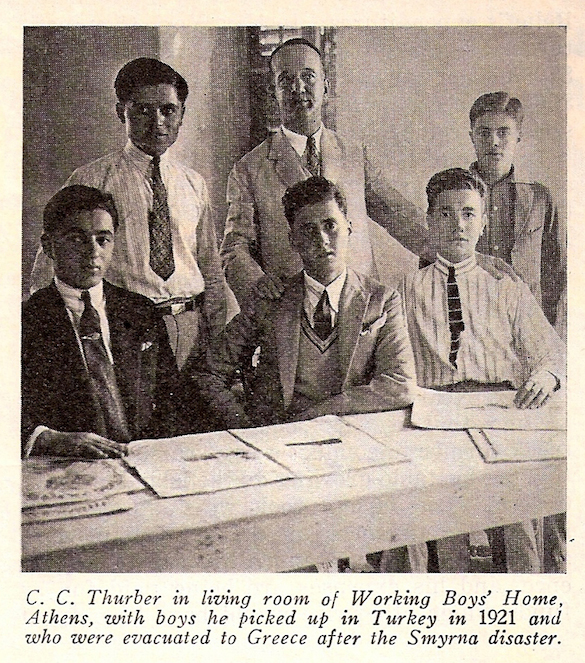Many personal stories of service and sacrifice have shaped the distinctive character of the Near East Foundation, originally known as Near East Relief. One such story is that of Christopher Thurber, a public health expert who, at the start of World War I, left his home in Connecticut to work with typhus-stricken children living in the barracks of war torn Constantinople (Istanbul). Thurber himself contracted typhus, but recovered in time to direct the safe transfer of 7,000 children from Sivas, Turkey, to Greece after the 1922 Smyrna Disaster—a massive fire that destroyed the Armenian and Greek quarters of the city.
Thurber became well-respected and admired for his humanitarianism, but it was his attempt to save a refugee woman from being beaten by soldiers in Scutari, Turkey, that further elevated his standing. As punishment for the attempted rescue, he was flogged, and suffered permanent damage to both feet. He walked with a cane for the rest of his life.
In 1924, Thurber traveled to Greece to be director of relief work in the region. There, he supervised the education of children in orphanages and also established homes in Athens for boys who had gone on to graduate. Thurber was in the midst of planning a new tuberculosis pavilion for children when he suffered a stroke and died on May 31, 1930. His contribution to public education and health was so pervasive that the Greek government held a state funeral and declared a national day of mourning in his honor. No other American had, or has since, received such a tribute.
Today, nearly 100 years later, the Near East Foundation’s day-to-day work is based on the practices pioneered by such selfless relief workers as Christopher Thurber.



